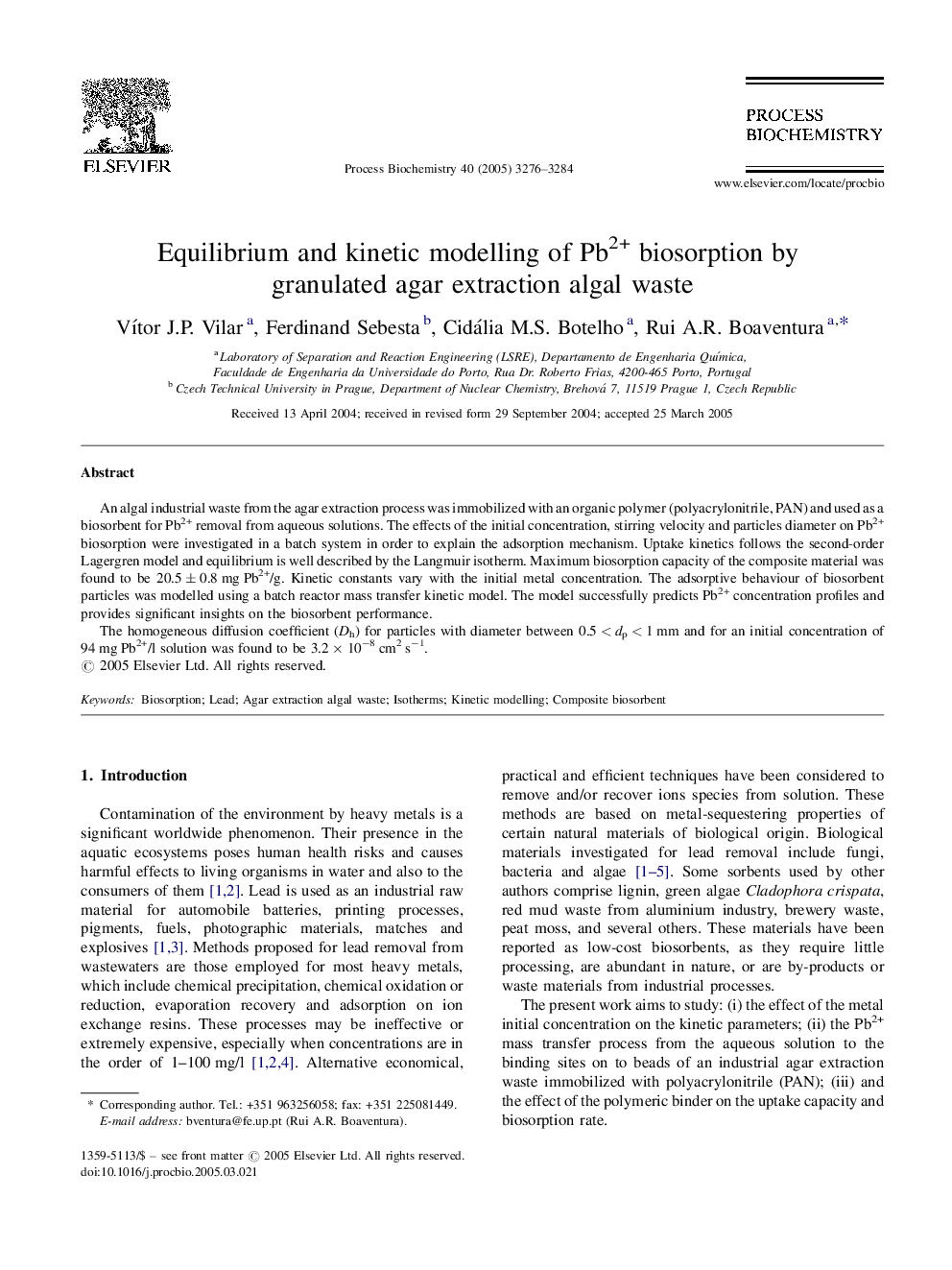| Article ID | Journal | Published Year | Pages | File Type |
|---|---|---|---|---|
| 36659 | Process Biochemistry | 2005 | 9 Pages |
An algal industrial waste from the agar extraction process was immobilized with an organic polymer (polyacrylonitrile, PAN) and used as a biosorbent for Pb2+ removal from aqueous solutions. The effects of the initial concentration, stirring velocity and particles diameter on Pb2+ biosorption were investigated in a batch system in order to explain the adsorption mechanism. Uptake kinetics follows the second-order Lagergren model and equilibrium is well described by the Langmuir isotherm. Maximum biosorption capacity of the composite material was found to be 20.5 ± 0.8 mg Pb2+/g. Kinetic constants vary with the initial metal concentration. The adsorptive behaviour of biosorbent particles was modelled using a batch reactor mass transfer kinetic model. The model successfully predicts Pb2+ concentration profiles and provides significant insights on the biosorbent performance.The homogeneous diffusion coefficient (Dh) for particles with diameter between 0.5 < dp < 1 mm and for an initial concentration of 94 mg Pb2+/l solution was found to be 3.2 × 10−8 cm2 s−1.
